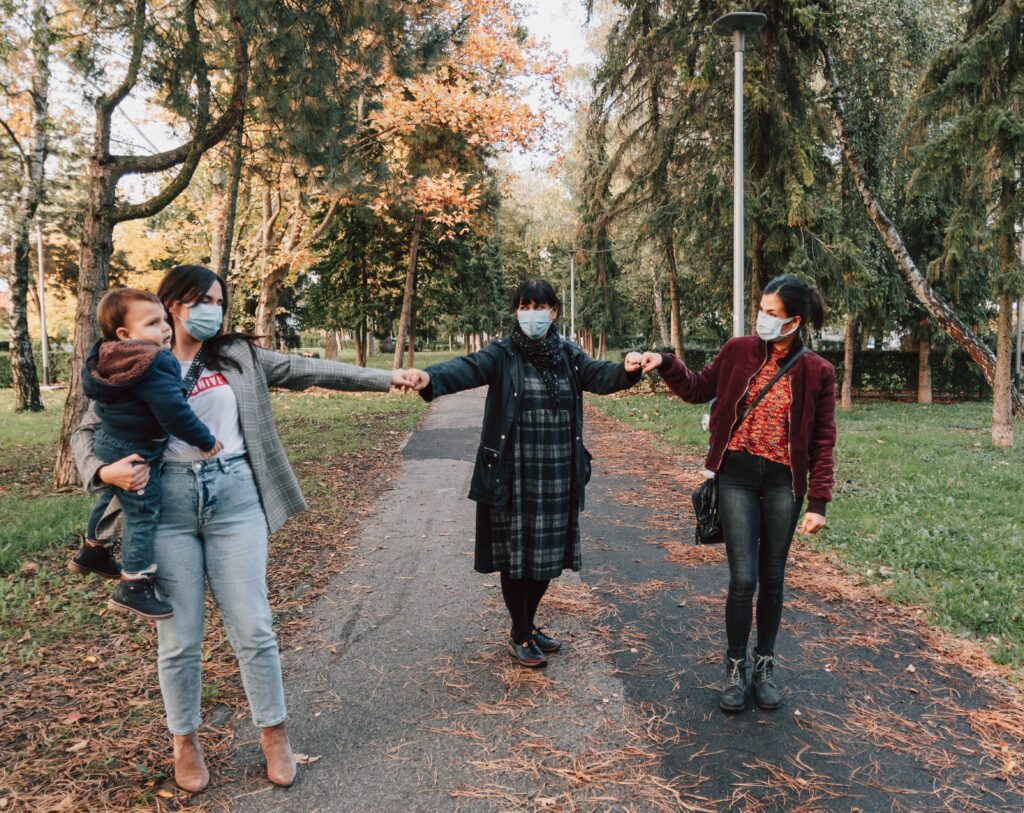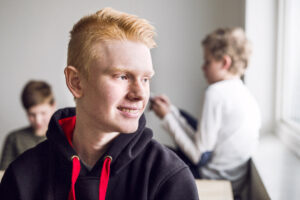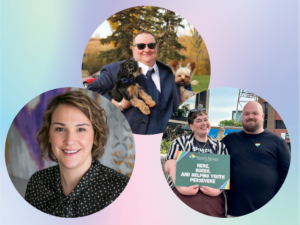By Carole Britton, Wood’s Homes Wheatland Program Supervisor.
To say I was blasé about the risks associated with COVID-19 is an overstatement; however, I can also say that I was not as rigorous about following the protocols as I could have been.
It is for this reason that I’m sharing my personal experience with COVID.
It began Nov. 23, 2020 as I was getting ready for work. I remember feeling a bit ‘off’. As I drove into town, this feeling increased to the point that I knew I was not going to be able to work that day. I couldn’t specifically describe the symptoms I had, but I knew I was getting sick. I returned home and slept the entire day. In hindsight, I’m so thankful that I listened to my body (and my boss) and did not have contact with anyone at work that day.
I slept for two full days. When I attempted to take a shower, I honestly thought I was going to pass out from the effort. On Nov. 25, I went to a COVID-19 testing facility in my pajamas – the effort required to get dressed was just too much. From there, I was directed to go to Strathmore Hospital – and so began my COVID journey.
I was placed in an isolation unit that was completely encased in white plastic sheeting, with a small rectangular slot for people to look through. Boy, I could relate to the struggles of E.T. at that moment! Over the next few hours, the amount of oxygen I required increased litre by litre and the attending physician began talking about a transfer to a Calgary hospital. I quickly reached the cut off level of 6L of oxygen and the transfer team was called.
That day was the last time I would see my family until December.
I will admit to shedding a few tears, as I was so afraid that I was going to die from COVID, all alone, like so many other stories we’ve heard through the media. Over the next few days at the Foothills Hospital, the amount of oxygen I needed continued to steadily rise. Once it maxed out at 15L, I ‘graduated’ from standard nasal prongs to a fixed optiflow tube with warm, humidified high-rate oxygen flow. As the levels of this increased, the ICU team came to prepare me for what they thought was an inevitable move to that unit.
During this time, I was approached by different research teams and agreed to participate in two different research studies. One involved ‘proning’, during which I had to spend 8-10 hours a day on my stomach in 2-3 hour intervals. The other study was a drug trial, and I was fortunate enough to have been selected for the ‘drug’ group rather than the ‘control’ one. I believe it was thanks to these two innovative studies that I was able to avoid needing an ICU bed and began seeing progress that would allow me to be transferred back to the Strathmore Hospital (and ultimately being discharged on Dec. 7).
I was hospitalized for a total of 13 days with no physical contact with my children, family or friends. When I first became sick, I was heavily in denial that what I was experiencing were COVID symptoms. I had back pain, extreme fatigue and standing for more than two minutes was excruciating. Yet, I convinced myself that it was anything but COVID. After all, how could it be COVID? I hadn’t been anywhere risky, and I made sure to wear a mask in public and sanitize my hands.
Only, this was not 100% true 100% of the time.
My family and I went through an incredibly scary and challenging time. I have five children, a granddaughter and a grandson on-the-way, and there were many moments spent wondering if they were going to have to go through life without me guiding and watching over them. My adult children had to step up and help manage the family, as well as manage their own worries about possibly losing their mother. A parent should never outlive their child, yet my own mother faced that fear as my condition worsened and oxygen needs increased every hour.
Throughout all of this, no one could visit me, comfort me, or bring me flowers, snacks or all the other things usually associated with being sick and in hospital. The fear of not having mum around to celebrate Christmas was a very real one for my family. Thankfully, those fears did not come true, and I was able to be back home nagging them to clean up after themselves and do their homework.
The ordeal did not end with my release from the hospital. I was in bed for another week (unable to walk farther than the bathroom), and it was another month before I was able to return to the job I love. I am still working on building my lung capacity so that I can climb a flight of stairs in one go. Some days are better than others – sometimes I feel like my old self in terms of energy, and other days I feel like I could sleep for 18 hours and it still wouldn’t be enough. Slowly but surely, I am gaining ground and I am thankful to every person who played a part in my healing.
There should never be any doubt in your mind that our health care system is filled with true, genuine heroes that are willingly putting themselves on the front line of this war. And yes, it is a war. And yes, people are dying.
My reason for sharing this story is simple. I want each and every one of you to please take this fight seriously. We have no idea when, where or how I contracted this virus – but be assured, it is out there, all around us.
I didn’t think it would ever happen to me, but it did.
Don’t let it happen to you.
Trust your PPE, and respect the directives around sanitizing and distancing. It is our collective responsibility to fight this together and be kind to one another.




